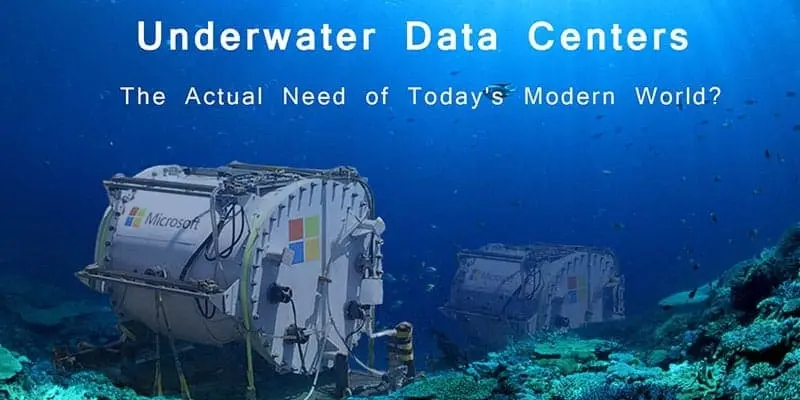
Underwater Data Centers: The Actual Need Of Today’s Modern World
The technology is evolving in every possible direction to provide more innovative platforms to store data. Keeping the same approach in mind, Microsoft has sunk a massive data center in the Scottish ocean to revolutionize the way we handle our data across the globe.
Microsoft’s CEO Satya Nadella believes that it is convenient to deploy data centers at the bottom of the ocean rather than finding suitable roofs to cool it down. Nadella took the initiative with Project Natick and placed a 40-foot data center pod in the Scottish sea. The company has been experimenting on underwater data centers for around five years to determine whether they can save on high energy bills.
In the Microsoft Future Decoded conference held in London, Nadella said that almost 50 percent of the world’s population lives near to water bodies, which itself gives a very different perspective for data center regions and expansion in the future. By utilizing technology borrowed by submarines, Microsoft goal is to improve efficiency and latency of the data centers undersea. Building small data centers close to where people live can be very effective, and fastens the entire supply chain of data center deployment.
Undersea data centers: A time-saving concept?
According to Nadella, undersea data centers are easy to build and fast to deploy as Project Natick was completed in 90 days only, from start to finish. Earlier it requires at least 2 years to design and place a data center nicely, but Microsoft has changed the game by reducing it to 90 days.
Undersea data centers: A way to use renewable energy?
Microsoft attached the pod to Orkney archipelago islands grid which contains the highest concentration of turbines and generates electricity through purely renewable resources. Nadella told the conference that Natick data center is self-contained and sustainable because it takes wind power to meet its renewable energy goals.
Nadella predicts that the Project Natick could be repeated across the world just the way it had deployed on the seafloor off the coast of Scotland. Undoubtedly, the majority of people thinks that computers and water is a bad mix, but together the blend can expand the firm’s global cloud computing platform.
How frequently it requires maintenance?
The equipment used in Project Natick is self-sustaining; it can hold data and process information for five years without any maintenance. However, artificial intelligence will be there to send timely reports of failure and to make decisions about environmental conditions. The Natick data center contains 12 racks of computers and a total of 864 servers along with a liquid cooling system that simply transfers the heat to the surrounding ocean. It also saves a lot of money as cooling data centers is a huge expense.
A scalable solution for the modern world needs
There’s no doubt that most of the customers find it hard to deal with data center representatives as they lack providing reliability and scalability to them. But, the same is not an excuse with Orkney underwater data center as it is inside a single container, and can be scaled by connecting with several modules.
Overall, Microsoft is all set to change the future of data centers by giving it a cutting-edge solution, shifting into the water. People require fewer resources to cool down the data centers and the energy that cooling equipment is also comparatively less.
What’s the future all about?
Microsoft is pretty sure about its project Natick and will soon launch its phase two to unleash the best of the ocean. Installing servers close to the people not only improves performance but also deliver low-latency data to users. The Azure team is already working on the research part in their labs to track the advantages of setting more widespread production under the sea. Nadella is quite sure about the future of underwater data center and asks the same from us. So, it’s better to blend it with our businesses to reap as much scalability as we can.
Conclusion
Microsoft’s Project Natick signals a bold shift in the future of data center innovation one that blends sustainability, speed, and scalability in a way traditional land-based facilities cannot. By placing data centers beneath the ocean surface, Microsoft has demonstrated that cutting-edge design, renewable energy, and faster deployment timelines can coexist to create a more efficient global cloud infrastructure.
With reduced cooling costs, minimal maintenance requirements, and the ability to deploy closer to users for lower latency, underwater data centers offer a compelling solution for the growing demands of our digital world. As phase two of Project Natick progresses, it’s clear that this technology is far more than an experiment, it is a glimpse into how cloud services may soon operate worldwide.
For businesses seeking reliability, scalability, and sustainability, embracing such forward-thinking innovations could unlock new opportunities. As Microsoft continues to refine this undersea approach, the future of data storage looks not just promising, but transformative.






